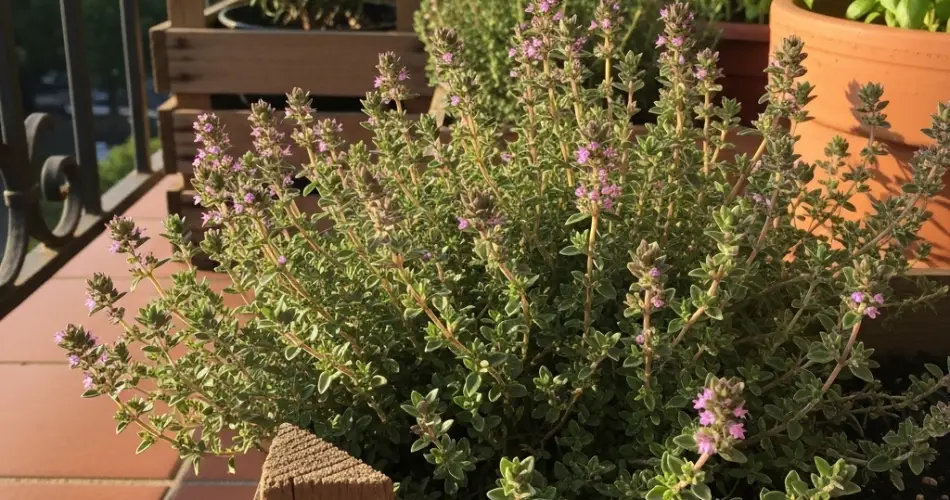Growing herbs at home doesn’t require sprawling gardens or expansive outdoor areas. With a little creativity, even the smallest spaces can yield fresh, aromatic harvests year-round. Thyme, a fragrant and versatile herb, is particularly well-suited for compact gardening, and crate planters offer a stylish, functional way to cultivate it. Whether you live in an apartment, have a modest balcony, or want to maximize patio space, crate gardening is a simple, eco-friendly solution for growing perfect thyme in tight quarters.
Why Thyme Works Well in Crates
Thyme thrives in slightly dry conditions and benefits from well-drained soil—two factors easily achieved in crate planters. Crates allow excess water to escape, preventing root rot and encouraging healthy growth. They’re also portable, so you can reposition them for optimal sunlight or move them indoors during extreme weather. Beyond practicality, crate planters add rustic charm to your outdoor living area, making them as decorative as they are functional.
Choosing and Preparing Your Crate
The right crate makes all the difference in your thyme garden’s success. Wooden crates, such as fruit boxes or wine cases, offer a natural aesthetic, while sturdy plastic crates can withstand years of use.
Key preparation tips:
-
Size matters – Select a crate that’s at least 20–25 cm deep to allow for strong root development.
-
Drainage – If your crate has a solid base, drill several small holes for water to escape.
-
Lining – Use landscape fabric, burlap, or breathable cloth to prevent soil loss while still allowing drainage.
-
Mobility – Consider attaching caster wheels so the crate can be easily moved around your space.
Picking the Right Variety of Thyme
Several thyme varieties adapt well to crate gardening, each with unique flavors and appearances:
-
Common thyme (Thymus vulgaris) – Robust and perfect for everyday cooking.
-
Lemon thyme – Adds a citrus note, ideal for seafood and salads.
-
Creeping thyme – Low-growing and ornamental, good for borders or mixed planters.
-
French thyme – Milder taste, well-suited to delicate dishes.
Selecting the right type depends on both your culinary preferences and the look you want to achieve.
Preparing the Soil Mix
Thyme dislikes overly rich soil but needs enough nutrients to sustain steady growth. A balanced mix for crate planters includes:
-
2 parts quality potting mix
-
1 part coarse sand or perlite for drainage
-
1 part compost for gentle feeding
Avoid heavy garden soil, as it can compact in the crate and limit air circulation to the roots.
Planting Thyme in Crates
You can grow thyme from seeds, cuttings, or nursery seedlings.
From seeds: Sprinkle them over the soil surface, press lightly, and keep moist until germination (usually 1–2 weeks).
From cuttings: Use healthy, 7–10 cm sprigs from an existing plant, strip lower leaves, and place directly into the prepared soil.
From seedlings: Space each plant 15–20 cm apart to ensure airflow and reduce the risk of disease.
Sunlight and Positioning
Thyme thrives in full sun and needs at least 6 hours of direct light per day. Place your crate in the sunniest spot available, whether on a balcony, patio, or windowsill. In hot climates, light afternoon shade can protect plants from stress while still ensuring strong growth.
Watering and Feeding Schedule
-
Watering: Thyme prefers to be kept slightly dry. Water when the top 2–3 cm of soil feels dry, and avoid letting the crate sit in water.
-
Feeding: Apply a diluted organic herb fertilizer once a month during the growing season. Too much fertilizer can weaken thyme’s natural flavor.
Harvesting and Pruning
Once the plant is well-established, begin harvesting by snipping stems just above a leaf node. Regular cutting encourages new growth and keeps the plant bushy.
For the most intense flavor, harvest in the morning after the dew has dried. If you want to store thyme, cut longer stems before flowering and dry them in a warm, airy place. Once dry, strip the leaves and store in an airtight container.
Seasonal and Long-Term Care
-
Winter care: In colder climates, bring crates indoors near a sunny window to protect plants from frost.
-
Pest resistance: Thyme naturally deters many pests, but watch for occasional aphids or spider mites.
-
Rejuvenation: Every 2–3 years, divide mature plants to keep them vigorous and prevent woodiness.
Creative Uses for Fresh Thyme
Fresh thyme enhances roasts, stews, soups, and even baked goods. It pairs beautifully with poultry, fish, and vegetables, and can be used in marinades, salad dressings, and herb-infused oils. Lemon thyme in particular is excellent for brightening seafood dishes or adding zest to fresh salads.
Final Thoughts
Crate gardening offers an accessible, space-efficient way to enjoy fresh thyme year-round. With proper sunlight, good drainage, and minimal care, your crate-grown thyme will reward you with aromatic harvests season after season. Even the smallest balcony can become a thriving herb garden when you harness the charm and practicality of crate planting.



